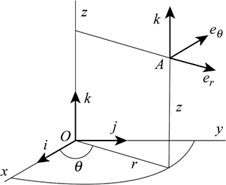Parallel and orthogonal
I need math help in this problem: a=(-5, 5 3) b=(-2,-4,-5) (they are vectors)
Decompose the vector b into b=v+w where v is parallel to a and w is orthogonal to a, find v and w
Decompose the vector b into b=v+w where v is parallel to a and w is orthogonal to a, find v and w
Final Answer:

Tips for related online calculators
Our vector sum calculator can add two vectors given by their magnitudes and by included angle.
Do you have a system of equations and are looking for calculator system of linear equations?
Do you have a system of equations and are looking for calculator system of linear equations?
You need to know the following knowledge to solve this word math problem:
Related math problems and questions:
- Coordinates 59763
 The vectors v = (2.7; -1.8), w = (-3; 2.5) are given. Find the coordinates of the vectors: a = v + w, b = v-w, c = w-v, d = 2 / 3v
The vectors v = (2.7; -1.8), w = (-3; 2.5) are given. Find the coordinates of the vectors: a = v + w, b = v-w, c = w-v, d = 2 / 3v - Add vector
 Given that P = (5, 8) and Q = (6, 9), find the component form and magnitude of vector PQ.
Given that P = (5, 8) and Q = (6, 9), find the component form and magnitude of vector PQ. - Vectors abs sum diff
 The vectors a = (4,2), b = (- 2,1) are given. Calculate: a) |a+b|, b) |a|+|b|, c) |a-b|, d) |a|-|b|.
The vectors a = (4,2), b = (- 2,1) are given. Calculate: a) |a+b|, b) |a|+|b|, c) |a-b|, d) |a|-|b|. - Parallel lines - dist
 Find the distance between the parallel lines 3x – 4y +7 = 0 and 3x – 4y + 5 = 0
Find the distance between the parallel lines 3x – 4y +7 = 0 and 3x – 4y + 5 = 0 - EE school boarding
 Three vectors, A, B, and C, are related as follows: A/C = 2 at 120 deg, A + B = -5 + j15, C = conjugate of B. Find C.
Three vectors, A, B, and C, are related as follows: A/C = 2 at 120 deg, A + B = -5 + j15, C = conjugate of B. Find C. - Distance of the parallels
 Find the distance of the parallels, which equations are: x = 3-4t, y = 2 + t and x = -4t, y = 1 + t (instructions: select a point on one line and find its distance from the other line)
Find the distance of the parallels, which equations are: x = 3-4t, y = 2 + t and x = -4t, y = 1 + t (instructions: select a point on one line and find its distance from the other line) - Perpendicular lines
 Points A(1,2), B(4,-2) and C(3,-2) are given. Find the parametric equations of the line that: a) It passes through point C and is parallel to the line AB, b) It passes through point C and is perpendicular to line AB.
Points A(1,2), B(4,-2) and C(3,-2) are given. Find the parametric equations of the line that: a) It passes through point C and is parallel to the line AB, b) It passes through point C and is perpendicular to line AB.
